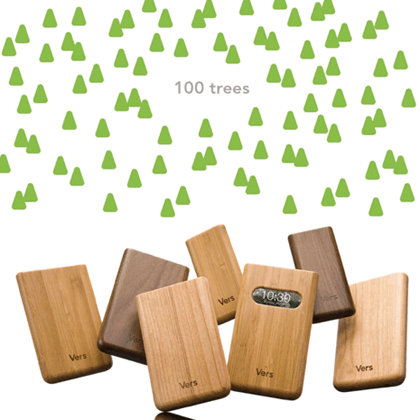“Meet the needs of the present without compromising the ability of future generations to meet their own needs.” – Report of the World Council on Environment and Development, 1987
This definition of sustainability is powerful in its sheer simplicity: replace what you take, period. Achieving sustainability in practice turns out to be much more challenging and elusive - which is probably why little has been written about what lies beyond sustainable design.
Wood plays a major role in our systems & accessories. It looks great, has awesome sound reproduction and impact resistance characteristics - and it’s eminently renewable. Because of our fundamental commitment to sustainability, we’ve always sought sustainably-managed wood sources near our shops in the Southeast Asia. While our softwoods are locally-sourced and plantation-grown, reliable sources of sustainably-managed hardwoods are harder to come by.
An integral part of our development process is to verify first-hand the origin of any of our key materials whenever possible. When we meet resistance, we seek another route. We’ve toured the wood stock lots of our MDF suppliers, distributor’s lumberyards, recycling operations of our printers and the re-grind operations of injection molders and pulp packaging operations. We’ve found it’s the only way to obtain some transparency in a historically opaque portion of the supply chain.
In the course of the development process of our recently-released wood iPod & iPhone case line, for instance, we were able to trace the hardwood stock we were planning to use from our wood shop through 2 distributors back to the sawmills in the US where the wood was originally processed. Both mills are multi-generational family operations with a 100+ years of history, each with the vast majority of their wood coming from privately-owned tracts near their mills. They manage their own forest stands as well, from which they draw timber as needed. These mills’ 100+ year track records in sustainable forestry practices speak for themselves; we are comfortable that the Walnut and Cherry hardwoods we use are being selectively harvested, thoughtfully managed and regularly replanted.
From our beginnings, we have been an active partner with the Arbor Day Foundation. They have been a helpful resource for understanding details regarding tree species & growing regions; their 37+ year commitment to trees and tree planting make them a perfect fit with our mission. Together we have developed a unique and successful 1:1 tree planting program with our customers, with all donations going to ADF’s reforestation programs with the US forestry Service. The 1:1 program is a simple but effective ‘device’ to communicate the value of energy efficiency to our customers, and to help them understand the lifetime carbon output of their newly-purchased Vers sound system. We match their $1 per tree donation to the ADF with many customers choosing to plant several.
To build on the success of this program, and to punctuate our commitment to sustainable design, we recently launched the “100 trees” program in conjunction with our new wood case line: for every hardwood tree used in production since our founding, we would replant 100 to re-forest park areas damaged by fires and to rebuild natural habitat. Replacing one tree for each tree we use would meet the basic definition of sustainability. Re-planting 100 trees powerfully demonstrates the potential for what we call regenerative design.
With the help of the Arbor Day Foundation, our wood shops and our sawmill suppliers, we have developed a detailed accounting of how much hardwood and softwood we have used since our founding in 2007, including scrap and production fallout – right down to the board foot. To kick off this program in earnest, we have since planted hundreds of trees with a commitment to continue as our production grows.
It’s an intriguing idea we hope to build on: an environment that is considerably better off with the existence of a product (and a company) than without.

